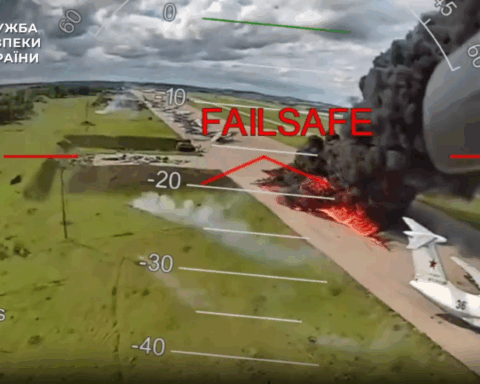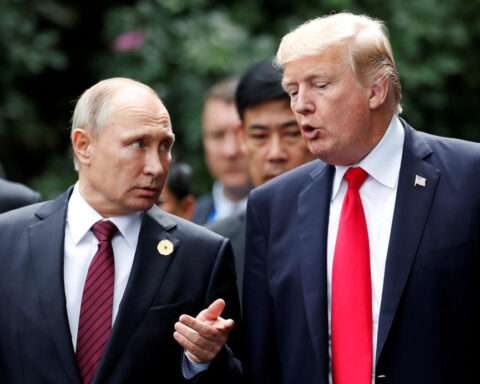Russia has successfully tested its ability to deliver a massive retaliatory nuclear strike by land, sea, and air, the Kremlin said in a statement on October 25, hours after lawmakers moved to revoke Russia’s ratification of a landmark nuclear test ban treaty.
“Practical launches of ballistic and cruise missiles took place during the training,” the statement said.
State TV showed Defense Minister Sergei Shoigu talking to Russian President Vladimir Putin about the exercise. Shoigu reported by video link to Putin on the exercise, which he said was a rehearsal for “a massive nuclear strike” in response to an aggressor’s nuclear attack.
According to official reports, a Yars intercontinental ballistic missile was fired from a test site in the Arkhangelsk region at a target in Russia’s Far Eastern Kamchatka Peninsula. At the same time, a nuclear-powered submarine launched a ballistic missile from the Barents Sea and Tu-95MS long-range bombers test-fired air-launched cruise missiles, the Kremlin statement said.
“In the course of the events, the level of preparedness of the military command authorities and the skills of the senior and operational staff in organizing subordinate [forces] were tested,” it said. “The tasks planned in the course of the training exercise were fully accomplished.”
Moscow has said that despite its deratification of the Comprehensive Test Ban Treaty (CTBT) it has no plans to abandon a 1992 moratorium on nuclear test blasts. Russia would only resume such testing if the United States did so first, Moscow has said.
Earlier on October 25, the Federation Council, the upper chamber of the Russian parliament, voted in favor of legislation to revoke Moscow’s ratification of the CTBT.
The Federation Council approved the move by 156 votes to 0, the final stage before it goes to Putin for his signature. Russia’s State Duma, the lower house of parliament, passed the bill earlier this month. Putin had called for the action to “mirror” the position of the United States, which has signed but never ratified the 1996 treaty.
The CTBT has been signed by 187 countries and ratified by 178 but cannot go into force until eight holdouts — China, Egypt, Iran, Israel, North Korea, India, Pakistan, and the United States — have signed and ratified it.
Though the United States has not ratified the treaty, it has observed a moratorium on nuclear weapons test explosions since the 1992 moratorium and says it has no plans to abandon the treaty.
Analysts have expressed concerns that Russia could move to resume nuclear tests to try to discourage the West from continuing to offer military support to Ukraine. Many Russian hawks have spoken in favor of a resumption of the tests.
Putin has said he has not made a decision on the matter, while noting some experts have argued that it’s necessary to conduct nuclear tests.
CNN published satellite images last month showing Russia, the United States, and China have all built new facilities at their nuclear test sites in recent years.
The U.S. Energy Department said last week it conducted a chemical explosion at its nuclear test site in Nevada “to improve the United States’ ability to detect low-yield nuclear explosions around the world.”
Speaking to the Federation Council before the vote on October 25, Russia’s Deputy Foreign Minister Sergei Ryabkov said the Nevada blast was “undoubtedly a political signal.”
“As our president said, we must be on alert, and if the United States moves toward the start of nuclear tests, we will have to respond here in the same way,” he said.






